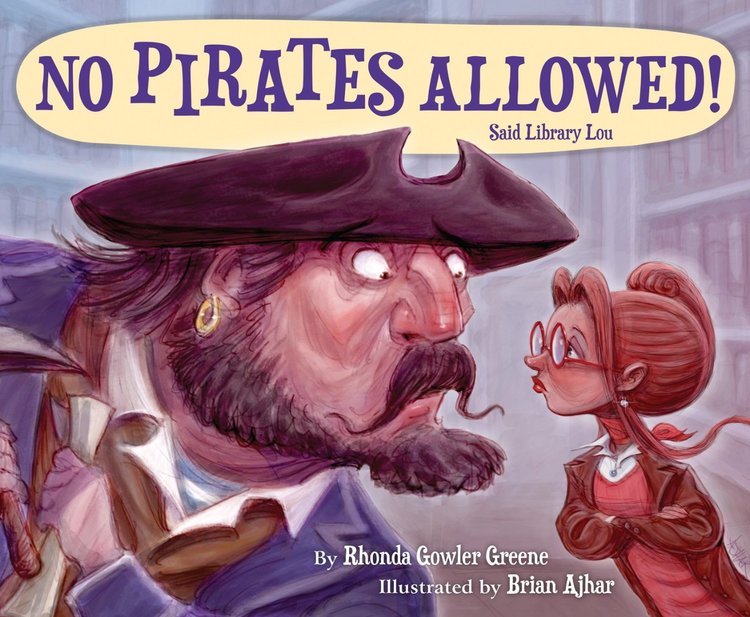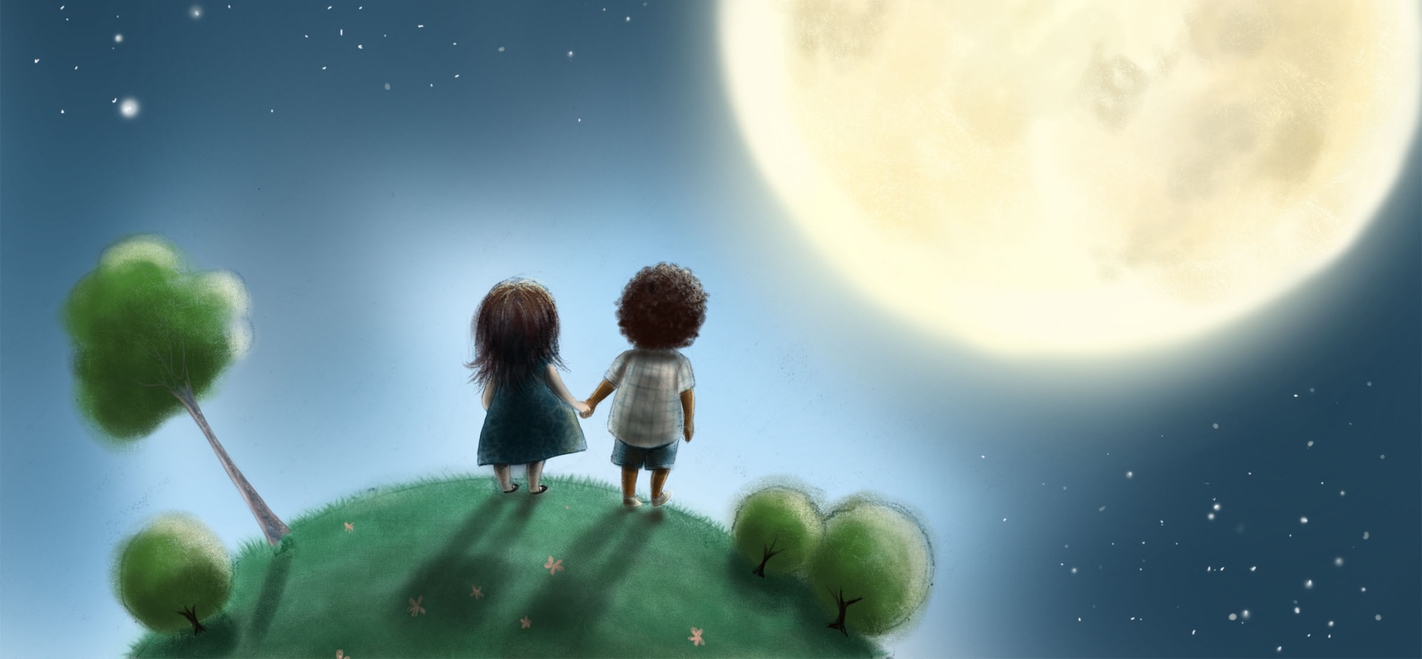What a wonderful opportunity all of us have to learn from one of the most genuine authors in the book business, Rhonda Gowler Greene. She is the author of over two dozen picture books. Her books have received honors such as School Library Journal Best Book, ILA Children’s Choice Book, Bank Street College Best Book, and starred reviews. Rhonda is a former elementary teacher, but for over twenty years now has devoted her time to writing and also speaking at schools and conferences. You can learn more about Rhonda on her Instagram @rhondagowlergreene and Twitter @rgowgreene. Although she maintains a Facebook @rhondagowlergreene, she needs all of you to encourage her to keep it up to date! And without further adieu…
When you buy through my links, I may earn money from my affiliate partners. Learn more.
1. Rhonda, thank you for agreeing to do this interview. You’re a successful author of over 25 books for children and have the pleasure of being represented by two seasoned agents, originally Marilyn Marlow and now Elizabeth Harding with Curtis Brown, Ltd. Now, you’ve had a literary agent since 1996 – 22 years! Has the relationship between author and literary agent changed over the last two decades?
It hasn’t changed a lot for me even within that amount of time, most likely because I’m still with the same agency. In 2003, Marilyn passed away. Elizabeth had been her assistant, so there was a consistency there. One minor change is regarding how I communicate. I corresponded with Marilyn by snail mail and calls. Elizabeth and I touch base every few months with a call, but most of our communication is through email.
In general, though, a major change that has occurred over the last two decades is that now most of the big houses will only look at manuscripts from agents. I sold my first two picture book manuscripts on my own—to Simon & Schuster/Atheneum and Houghton Mifflin. (Those first sales were after 3 ½ years of submitting about ten different stories. And getting 220 rejections!) There was interest, then, from a few publishers on another story. I was new to being published and wasn’t sure if I should go with a third house, in case one made an offer on that new story. So, I started querying agents. Several weeks later, I got home from the grocery store one day and there were two phone messages. (This was before everyone had cell phones!) The first message was from my editor at Atheneum saying she wanted to buy my new story. The second was from Marilyn saying she would take me as a client. That was an exciting day! I was totally honored that Marilyn took me on. I reached for the top (a top agent) and she said ‘yes.’
My recommendation to writers seeking representation is to query agents while also submitting stories to houses that still accept unsolicited manuscripts. It takes a long time to hear back from agents and editors. A good place to find out which houses accept unsolicited manuscripts is the Children’s Book Council, under “Our Members”.
2. You are transparent in your discussion of facing rejections and you note online that those rejections continue to come, even though you’re such an experienced author. You’ve mentioned the importance of passion, persistence, and patience. Among those three things, is adapting included within passion or perhaps persistence? Have you had to adapt your writing over the years to fit better in the market?
Yes, I’ve had to adapt my writing, mainly regarding the length of my stories. To me, this adapting is part of persistence—working and working on a manuscript to make it as saleable as possible. Most picture book editors now want to see short texts, usually under 500 words. When I first started submitting years ago, it was under 1000 words. Since a picture book is not very many words to begin with, that’s a significant change! (I’d say an exception to short manuscripts, though, is biographical picture books. There are a lot being published now, and they are usually much longer than 500 words.)
Just within the past few weeks, I’ve had interest from an editor regarding a new story. The editor said she’d be willing to look at the manuscript again if I made changes. She gave general comments and one was—if the story “were shorter.” I thought it was already short at 412 words! I made the story even tighter and just recently sent my revision (315 words) to Elizabeth. There’s no guarantee an editor who is willing to look at a revision will buy the manuscript. More than once, I’ve revised a story for an editor, but then it was still turned down. That’s extremely disappointing. But, I always try to revise according to an interested editor’s comments because it can lead to a sale. I’ve also had that happen. I have my fingers crossed regarding this new story!
3. What would you say is your most successful book? And don’t let this only be with financial criteria. Why do you consider it your most successful book?
I’d say The Very First Thanksgiving Day (Atheneum/Simon & Schuster, 2002). Why?
—It’s been in print now for 15 ½ years, in both hardcover and paperback. (Many children’s books go out of print within 5 to 10 years.)
—Soon after it was published, it was picked up by Scholastic book clubs for both paperback and audio versions.
—In 2016, it was made into a Weston Woods video and also audio CD. I was honored. I’ve loved Weston Woods videos for years!
—It’s still used a lot by elementary school teachers.
—It has gorgeous illustrations by Susan Gaber, which I think plays a big part in the success of the book. (By the way, I do not choose my illustrators. My editors do.)
If I may add, a close second is my When a Line Bends…A Shape Begins (Houghton Mifflin, 1997).
—It’s still in print in paperback.
—It’s been translated into Chinese and Korean.
—It was a Scholastic book club edition.
—It’s still recommended a lot for young students, especially for math and art lessons.
4. Do you find yourself more drawn towards fiction or non-fiction? Which do you enjoy writing more?
I like both, but I lean toward fiction. I love to play with words and write fun picture books. With fiction, your imagination can run wild to just about any topic. I do enjoy researching though and writing non-fiction books too. I have a non-fiction picture book coming out next spring. [See more about that in answer #15.]
5. In terms of writing style, how do you typically progress from concept to manuscript?
I don’t write every day, though I should get into that habit! If I’m not working on a story, I’m often working on a talk, or powerpoint presentation, for a school visit or conference. When I get an idea for a story, though, I get obsessed with it until I can get it out of my head. Then I work on it non-stop for days. (Sometimes I spend days just on a phrase, or one word!) Once I get a story written from beginning to end, I start revising. I spend more time revising than writing a first draft. (Too, if a manuscript sells, I almost always have to revise even more for the editor.)
I try to get every word just right. That’s so important, I think, in a picture book. When I think my story is about done, I usually make a 28-page “dummy” and try to imagine it as a real book. (Most picture books are 32 pages, though there are always exceptions. I don’t include a title page, dedication and copyright pages, etc. in my “dummy.” The 28 pages are just the text.) Even at that stage, I’m often making more changes. When my story is ‘perfect’ in my eyes, I send it off to my agent. Every once in a while, Elizabeth will ask for some changes before she submits one of my stories. But, usually, I have a story so tight and ready to go, she submits it as is.
6. Let’s rewind time…what would you say to your teenage self, or your twenty-something self that you wish someone told you?
To my teenage self, I’d say—“Don’t worry so much. Things will work out. Enjoy the journey.” I remember in high school wondering and worrying—How am I going to fit everything in?! I wanted to go to college, teach, get married, and also have children. At that point, I’d never even thought about writing children’s books. Then, I did everything within a few years—got married (three weeks shy of 19), finished my undergraduate degree, taught for three years, got my master’s, and had four kids. By then, I was only 31! I didn’t know I would end up writing children’s books. I feel very lucky now, though, getting to do what I love. And, I feel very lucky to be published with so many great publishers!
Regarding writing, I wish someone had taught me to—“Read like a writer.” What I mean by that is really looking at the writing in a book and thinking about how it’s crafted. We teach this to students now, but no one really said this to me when I was younger. I learned it on my own. I don’t think I actually started “reading like a writer” until I was in my 30’s. That’s about when I started getting interested in writing children’s books.
7. Many as-yet-unpublished authors and illustrator’s have laser-like focus on just getting that first book published or just getting that agent representation. Having been through those two things and having seen many manuscripts accepted and perhaps some rejected, what do you focus on most?
I focus on keeping up with what new children’s books are being published, studying them, and trying to make my writing better and better. It’s hard keeping up since so many children’s books are released each year. But, I try as best I can, and especially regarding picture books, though I do read a lot of newly published kids’ novels too. I think knowing what is being published, and studying those books, helps my writing more than anything. What I recommend to anyone wanting to write a children’s book, whether it be a picture book, easy reader, or novel, is to read read read what’s being published (especially within the last few years) and determine if your writing is that good.
Too, one main reason I study children’s books so much is that, interestingly, that’s when ideas most often pop in my head. For me, something in a book very often sparks an idea.
8. What is your feeling on college degrees and master’s degrees in writing? Is it necessary for someone to have that level of education or specific knowledge to be successful in the publishing industry?
You don’t have to have a college degree to get published. I have some friends who are very successful children’s book authors who don’t have college degrees. Of course, that doesn’t mean I’m against getting a degree. I was an elementary school teacher before I became a children’s author. Then, I got my master’s to be a school librarian, but never became that after starting a family. It helped a lot, I think, that I absolutely loved children’s books, and still do!
I know there are great MFA programs, for example at Vermont College of Fine Arts and Hamline University. I think it depends on each person. If someone wants to put the time, money, and dedication into a program like that, I say ‘Go for it!’ It can only help your writing. But, too, I’m a firm believer that actual children’s books, if you study them, can be some of the very best ‘teachers’ of all. I have hundreds and hundreds of children’s books, from picture books to novels, at my house! And I “read them like a writer.”
9. And on that education point, can a teenager do this? Could a teenager with passion, persistence, and patience, find a literary agent and publish traditionally?
If a teenager’s writing is as good as what’s being published, then, yes, I think he or she can find an agent and get published the traditional way. It’s all about the writing. Or, sometimes what happens is that a teen’s book is self-published, then ‘discovered’ and sold to a major publisher. An example of this is Christopher Paolini’s Eragon. My first agent, Marilyn Marlow, bought S. E. Hinton’s classic The Outsiders when Hinton was a teenager. Both Eragon and The Outsiders even went on to become movies.
10. Let’s brag about others for a minute. Are there any authors or illustrator’s you absolutely adore? Any role models in the industry you look up to or received guidance from?
I have lots of favorite children’s book authors. For picture books, I lean toward rhymers and poets. I have a music background (minored in music/piano in college), so maybe that’s why I love lyrical writing and rhyme so much. Some of my favorite children’s authors are Mary Ann Hoberman, Judy Sierra, Douglas Florian, Karen Beaumont, Alice Schertle, Joyce Sidman, and Julia Donaldson, to name a few. One of my favorite picture books is the rhyming counting book One Big Pair of Underwear by Laura Gehl. Too, I’ve always loved books by Cynthia Rylant, from her picture books like When I Was Young in the Mountains to her easy readers, like the Henry and Mudge series or Mr. Putter and Tabby series, to her Newbery-award winning Missing May. All of her books have such a warm and timeless feel to them.
I’m not an illustrator, so I usually notice the writing in a book more than the art. But, I especially like watercolor. For example, I love the work of the late children’s illustrator, Marc Simont. And, though not watercolor, I also really like the art of the Fan Brothers. Their children’s book illustrations are stunning!
I guess I’d consider Cynthia Rylant a role model. Many years ago, I started reading her book of short stories Every Living Thing when standing in the children’s section of a Borders Books. (I miss Borders!) I loved the writing. After that, I started reading all her books. And, I wrote her a letter (snail mail) asking if she might be speaking anywhere. She wrote back and said she was speaking at a library conference in Indianapolis. I drove five hours to hear her. Meeting her, and hearing her speak at that conference, was a real inspiration. She wrote back to me after I got home. At the end of her note, she wrote—“Keep writing.” I wasn’t published at the time. It meant a lot to me. I still have that postcard.
There’s no one really in particular I’d say I’ve received guidance from. I’ve been in various writers’ groups over the years, though I haven’t participated in one for the past several years. I was in groups with successful children’s picture book authors. It was helpful getting critiques on my manuscripts from them. At this point, though, I feel like I can look pretty critically at my writing. I agree with what Ann Whitford Paul says in her wonderful how-to book Writing Picture Books: “The key to improving your writing is to learn, as best you can, how to be your own critic. You must develop ways to pull yourself back from your story and become an outside reader.” (pg. 2)
11. If you could say one thing to all the children in the world, what would it be?
Work hard at what you want to do, or be. And don’t give up.
12. What is the most difficult aspect of being a professional author? What’s the most enjoyable?
I’ve experienced a lot of highs and lows over the years being a children’s book author. The most difficult for me is working so hard on a story, knowing it’s as good as what’s being published and that it’s one my agent loves, but then for some reason it doesn’t sell. I think sometimes that happens because maybe it’s not seen by that one editor who would be just right for it, or an editor who does love it can’t get his or her marketing sales force behind it. The bottom line for publishers is to make money on a book.
It’s always exciting to sell a manuscript. In 2012, I had an extra exciting sale—a story of mine sold in a four-publisher auction. The bidding went on for a month. When I decided to go with Bloomsbury (a hard decision!), the editors there even sent flowers. One reason I went with Bloomsbury was because I was offered a 3-book contract. My second book from that contract was just released in May—Let’s Go ABC! Things That Go, From A to Z. For Books 2 and 3, I was given the topics of ‘transportation’ and ‘trains.’ I learned it’s way harder to come up with a story that you don’t yet have an idea for as opposed to one where an idea pops in your head.
Also, it’s very rewarding to receive accolades once a book is released, such as starred reviews, nominations for state awards, etc.
The most enjoyable thing of all, though, is hearing stories about children falling in love with one of your books. Once, a dad told me his son slept with my Barnyard Song book under his pillow because he loved it so much. Wow.
13. If you could be any animal for a week…what would you choose and why?
Harry from Harry the Dirty Dog fame. He gets to have some fun adventures, but then ends up at home sweet home and surrounded by his loving family.
14. You’ve got a family, hobbies, goals. What do you do to help balance it all? Have you found yourself coping with the competing interests in your life differently now than when you first started?
It’s hard balancing everything, as I’m sure it is for most people. Family always comes first for me. I have four grown kids. It was much harder to fit writing time in when they were younger. For many years, my life revolved around school events, soccer games, and music lessons. When my kids were really little, I wrote after putting them to bed. But, once they were all in school, it got easier to find time to write. And when empty nest came along, it was even easier. Now I have three little (adorable!) grandkids. I read and read and read to my kids. And now I do the same with my grandkids. All that reading actually helps me keep up with the new children’s books coming out. So even when I’m babysitting, I’m feeding my passion for children’s books! I think that’s one thing that helps keep balance in my life.
Another is travel. I love to travel. If I’m not writing or reading, I might be planning a trip. My husband and I have visited several European countries. I spend weeks working on an itinerary and booking everything. I really enjoy it.
I constantly have story ideas swimming in my head. But, I often feel like I don’t have enough time to do everything I want to do! That keeps my life exciting, I guess, because I’m never bored. (smile)
15. Looking ahead, what’s next for you? What can readers expect to see in the next 1-2 years? What about in 5-10 years?
This November, I have a picture book coming out with Zonderkidz—Here We Come, Construction Fun! In March 2019, I have a picture book about Apollo 11 coming out with Sleeping Bear Press. It’s titled The First Men Who Went to the Moon. I’m especially excited about it because I wrote the story several years ago, and it finally sold in 2017. Next year is the 50th anniversary of the Apollo 11 lunar mission, so my book will be released in celebration of that. I watched the moon landing live in 1969 when I was a kid. It’s amazing to me that now I have a book coming out about it! And, the third story (the train one) from that 3-book contract I received from Bloomsbury will be coming out sometime. I just don’t know when. I’ve written the manuscript and the illustrator is Daniel Kirk. The book is still in the works though.
Currently, I have six rhyming picture book manuscripts circulating with editors. Sometime, I’d like to sell a non-rhyming picture book story. Too, I love free verse kids’ novels. I own a lot of them, and study them. Though my main interest now is writing picture books, maybe some day I’ll finish the free verse mid-grade I started and it will be a book I can hold in my hands. That would be a real accomplishment.
Rhonda, thank you. It’s been a pleasure having you take time with us and go over so much of your author journey. You’re truly an inspiration and I have no doubt these examples, thoughts, and feelings from your life will have a great impact all who read it. Thank you for giving so much back to the industry you love!
Thanks so much for having me!




BrookeVS
April 11, 2019Wow! Fantastic interview. Thank you so much, Rhonda, for your insight! I loved it all. And thank you Rhys for conducting the interview. ?
Rhys Keller
April 11, 2019Ah, so glad you found it helpful and encouraging! Rhonda is amazing and cares so genuinely about writers and readers. It’s no wonder she has reaped such a legacy of success.
How To Query Correctly – Rhys Keller
June 14, 2018[…] Once exceptionally resourceful site, Children’s Book Council, was recommended during my interview with Rhonda Gowler Greene. CBC provides information on many things, one of which is publishing companies and what types of […]